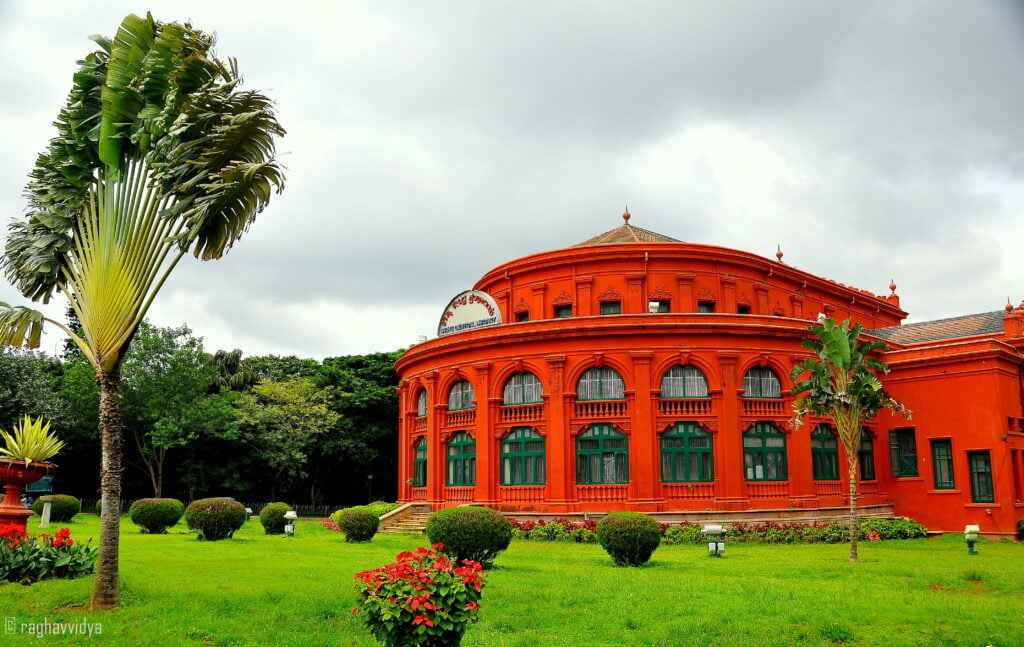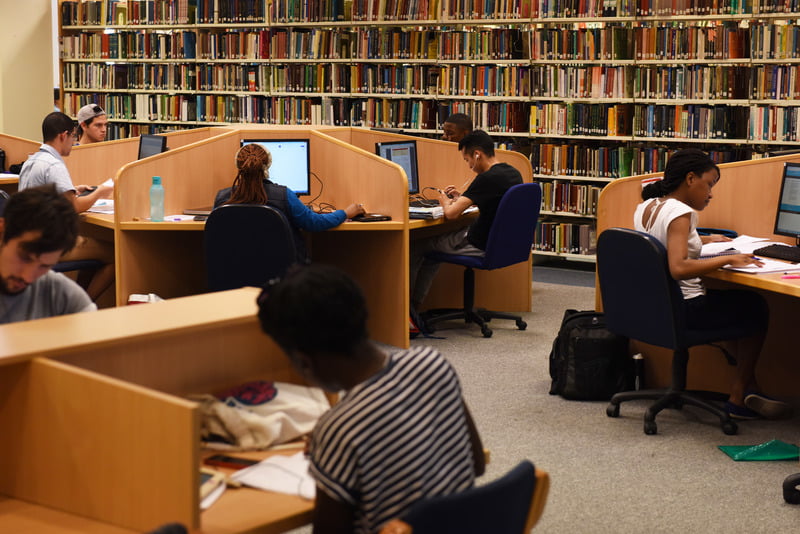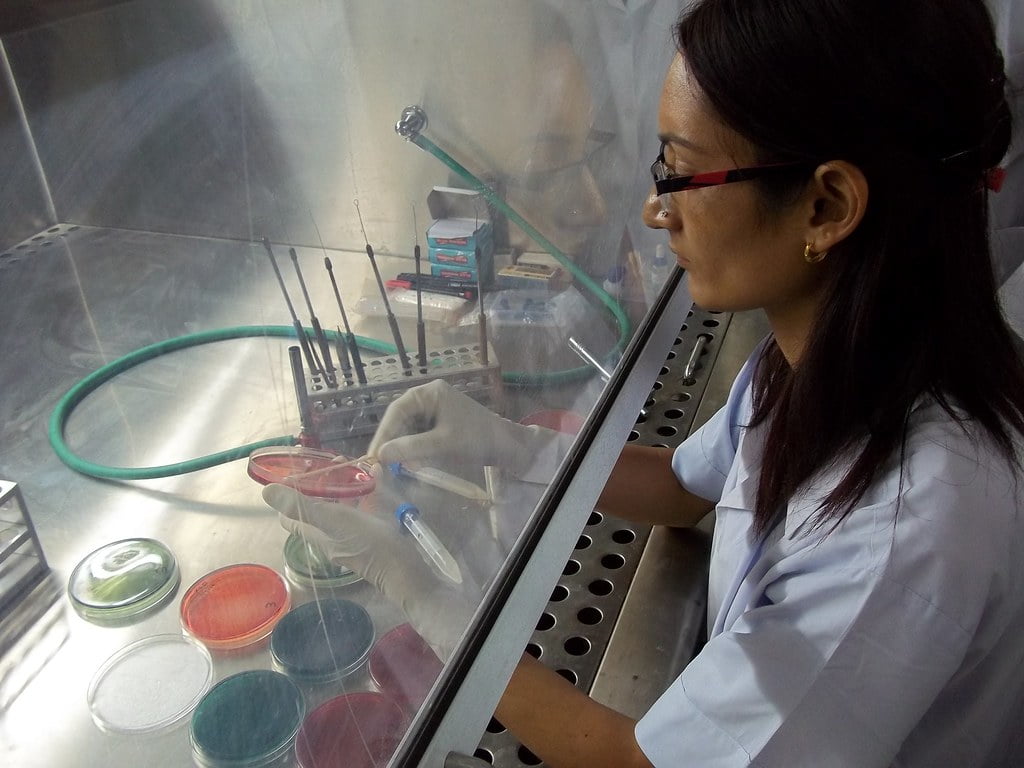India-wide subscription to research journals paves path for Global South
With rising fees for research journals, India is pressing ahead with a nation-wide subscription to allow more people to access science.
 India’s One Nation, One Subscription plan would give public libraries like this access to the worlds top scholarly journals. : raghavvidya, Flickr CC 2.0
India’s One Nation, One Subscription plan would give public libraries like this access to the worlds top scholarly journals. : raghavvidya, Flickr CC 2.0
With rising fees for research journals, India is pressing ahead with a nation-wide subscription to allow more people to access science.
Imagine you start reading an important news article on a website and a message flashes on your screen asking for a hefty fee to read the entire article … it would be irritating, to say the least.
This is the reality for most scientists. They are locked out of scholarly journals that carry the information they need to progress their research unless they pay a fee to the publisher. And the charges have risen to levels several hundred times higher than inflation. As a University of Missouri librarian calculated in 2020, compared with 1983, charges are 113.78 times higher than inflation for famous scientific journals such as Nature, 189.18 times for Science and 244.49 times for the New England Journal of Medicine. Put another way, NEJM price rises have outpaced inflation by 24,339 percent.
Indian researchers and research institutions collectively spend around 15 billion rupees (USD$200 million) on journal subscriptions for scholarly literature every year — a huge cost for a growing economy and a problem not unique to India but similar for all countries of the Global South.
Scientific publications are a multi-billion dollar industry dominated by a few big players. Academics are often government funded, do research often funded by taxpayers and then use taxpayer dollars to read about the research in privately owned journals.
It’s a massive transfer of wealth from the taypayer to private industry and there have been recent calls to overhaul the system. But to expect publishers to make the literature free for all is a utopian dream. Therefore, the scientific community has been trying to aim for more realistic goals and find mechanisms to make science more accessible to all.
India’s “One Nation One Subscription” (ONOS) policy has garnered plenty of attention.
India’s ONOS model, first called for in 2017 by the Indian Academy of Science and drafted into government policy three years later, calls for a centrally negotiated subscription deal with publishers, making scholarly articles free to read for all researchers, eliminating the need for individual and institutional subscriptions. The collective bargaining power of the entire nation is expected to allow greater value for money.
India’s ONOS policy is intended to allow better access to scientific literature, increased scientific literacy and better use of research grant money. If the policy is successful, it will serve as a role model for other parts of the world and likely be replicated across the Global South.
India began the first phase of implementation of ONOS in November 2022, with 70 publishers’ resources considered for access from April 2023. Negotiations for a central subscription for these publishers should commence soon.
But the path to implementation of One Nation One Subscription will inevitably have challenges.
Its success depends on well-negotiated deals between government and publishing houses. The government would need a team of seasoned negotiators to ensure a good outcome.
Another challenge is identifying which resources Indian researchers will need. A well-designed, methodical approach is crucial for success. This is where existing subscriptions lists from institutions and libraries will help. The scattered nature of those lists means a single access portal combined with a monitoring and audit system will be key to pinpointing which journals are most desirable.
A country of India’s breadth has many institutions of different sizes and access to funds. The ONOS policy is expected to reduce the burden on small institutions and bring systemic change in access to scholarly articles.
The hope is it will create a strong research ecosystem that promotes research for its own sake, as well as more applied and commercial research.
Many institutions worldwide have been pushing towards a “transformative agreements”, as the publishers call them, gradually moving from individual subscriptions to nation-wide free-to-read arrangements. These agreements enable all of society to have free access to scientific literature.
The catch is such agreements put in place an up-front fee to scientists who want to publish their research findings. It shifts the burden of fees from readers to authors, which in turn is passed on to funding bodies or the taxpayer. The fee to publish for the most reputed journals are often exorbitant and, despite occasional fee waivers, researchers from the Global South many times cannot afford the “pay-to-publish” models.
The ONOS policy serves as a formidable alternative to transformative agreements for the Global South. This model will enable countries to stand on stronger negotiating positions through purchase of greater bulk of content and provide people with full access to a large number of journal titles. Although it is not yet clear whether scientists will need to pay up-front fees to publish, a mature ONOS policy is also expected to support access to journals in the Global South, especially for young researchers, by having separate provision for funding free-to-read publications or a one-time licensing agreement to journals with up-front publishing fees. Experts on ONOS policy have recommended a similar plan to promote and support accessibility for India.
Some see the ONOS model as a “win-win” for nations and publishers, where all researchers would have full access to scholarly writing and publishers could continue to make a profit.
Another winner would be science. Since researchers will not be required to spend their research funds on publication charges, they will be able to use their grants on experimental expenditures and thus generate better findings. More readers would mean more scientific exposure and improved research outcomes and development in the long term.
The Global South is under pressure to implement transformative agreements by institutions and consortiums of the Global North presently. A successful ONOS model might be an appropriate alternative to this approach. India’s move to the ONOS policy thus serves as an important transition that the Global South is looking towards.
Nishant Chakravorty is associate professor, School of Medical Science and Technology, IIT Kharagpur, India and National Core Committee Member, Indian National Young Academy of Sciences (INYAS), New Delhi. He declares no conflict of interest.
Originally published under Creative Commons by 360info™.











